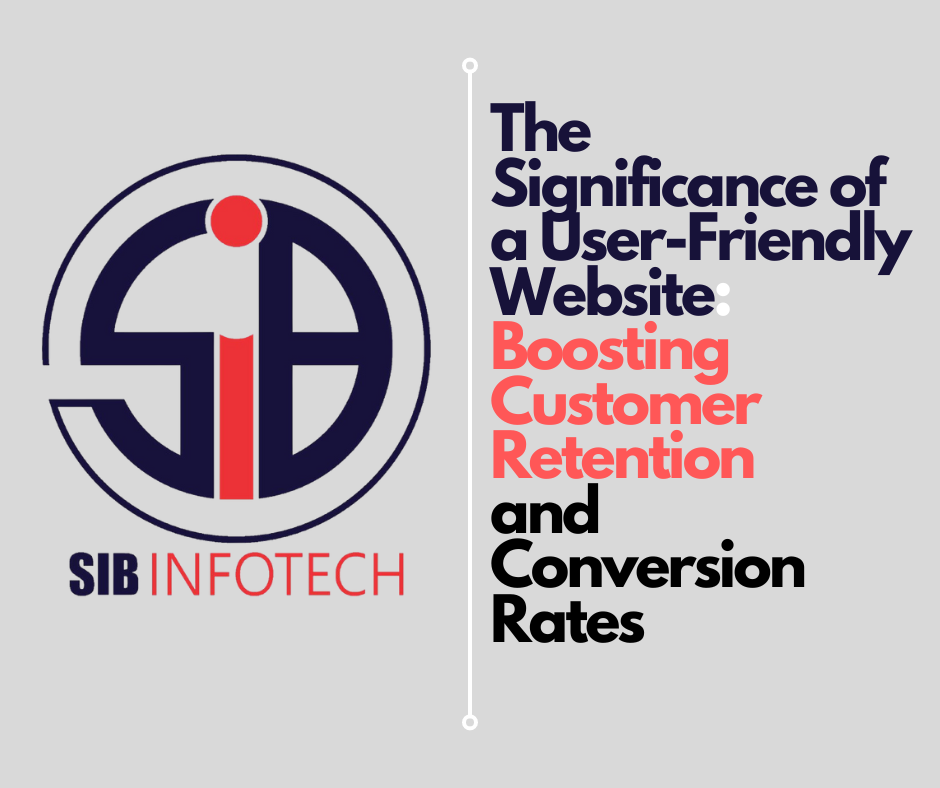In today’s digital age, where competition in the online space is fiercer than ever, businesses must prioritize creating a user-friendly website. A user-friendly website is not just a nice-to-have; it’s a crucial element that can significantly impact customer retention and conversion rates. In this blog post, we’ll delve into the The Significance of a User-Friendly Website , how it can contribute to the success of your online venture.
What is a User-Friendly Website?
Before we explore its significance, let’s define what we mean by a user-friendly website. A user-friendly website is one that is easy to navigate, visually appealing, loads quickly, and provides a seamless and enjoyable user experience. However, It’s a website that caters to the needs and preferences of its visitors, ensuring they can find what they’re looking for effortlessly.
Why Does User-Friendliness Matter?
- First Impressions Count: Your website is often the first point of contact between your business and potential customers. A user-friendly website creates a positive first impression, conveying professionalism and trustworthiness.
- Enhanced User Experience: A smooth and intuitive user experience keeps visitors engaged and encourages them to explore your site further. It reduces frustration and increases satisfaction, making visitors more likely to return.
- Improved Accessibility: A user-friendly website is accessible to a broader audience, including people with disabilities. This inclusivity not only aligns with ethical considerations but also expands your potential customer base.
- Reduced Bounce Rate: If visitors find your website difficult to navigate or slow to load, they are more likely to leave immediately. A user-friendly site reduces bounce rates, keeping visitors engaged and on your site longer.
Impact on Customer Retention:
A user-friendly website plays a significant role in customer retention. Here’s how:
- Repeat Visits: When customers have a positive experience on your website, they are more likely to return. This loyalty can lead to repeat business and word-of-mouth referrals.
- Building Trust: A user-friendly site instills trust in your brand. Customers are more likely to trust a website that functions smoothly and provides a hassle-free experience.
- Engagement: User-friendly features like clear navigation, engaging content, and easy-to-use forms can encourage visitors to interact with your website, sign up for newsletters, or participate in surveys, fostering a sense of community.
Impact on Conversion Rates:
Conversion rates are a crucial metric for measuring the success of your online presence. A user-friendly website can significantly boost your conversion rates:
- Streamlined Checkout Process: In e-commerce, a complicated or confusing checkout process can lead to cart abandonment. A user-friendly website simplifies this process, making it easy for customers to complete their purchases.
- Effective Calls to Action (CTAs): User-friendly websites strategically place CTAs, guiding visitors toward desired actions such as signing up, subscribing, or making a purchase.
- Mobile Responsiveness: With the increasing use of mobile devices for online browsing and shopping, a user-friendly website must be responsive and adapt to various screen sizes. This improves the chances of converting mobile users into customers.
- Page Load Speed: Slow-loading pages can deter users and result in missed conversion opportunities. A user-friendly website prioritizes speed to keep visitors engaged.
In conclusion, a user-friendly website is not just a design preference; it’s a business imperative. It directly impacts customer retention and conversion rates, two essential aspects of online success. Investing in the user-friendliness of your website is an investment in the growth and sustainability of your business. By providing an exceptional online experience, you can create lasting customer relationships.

